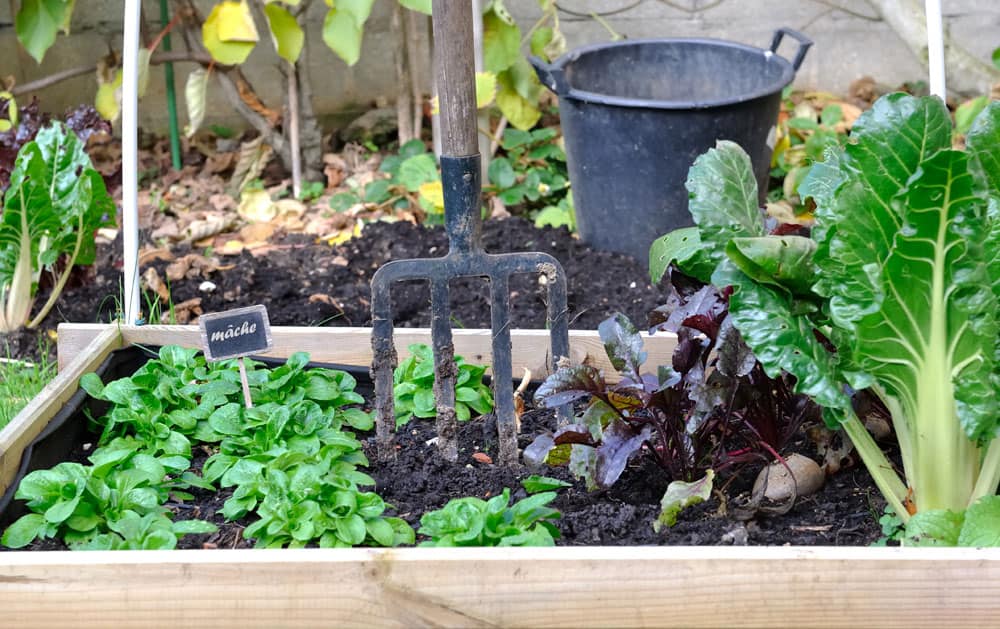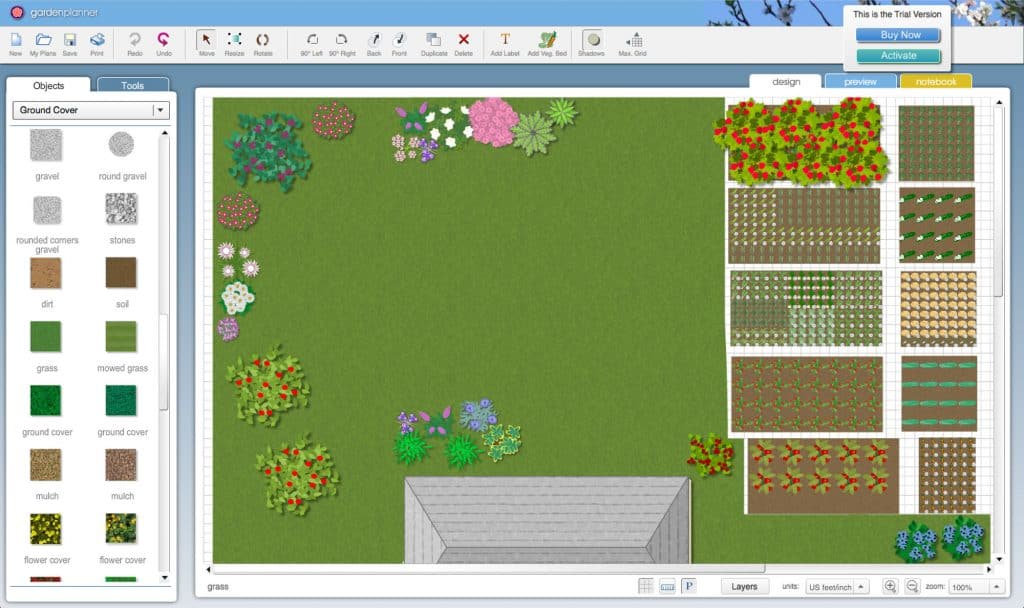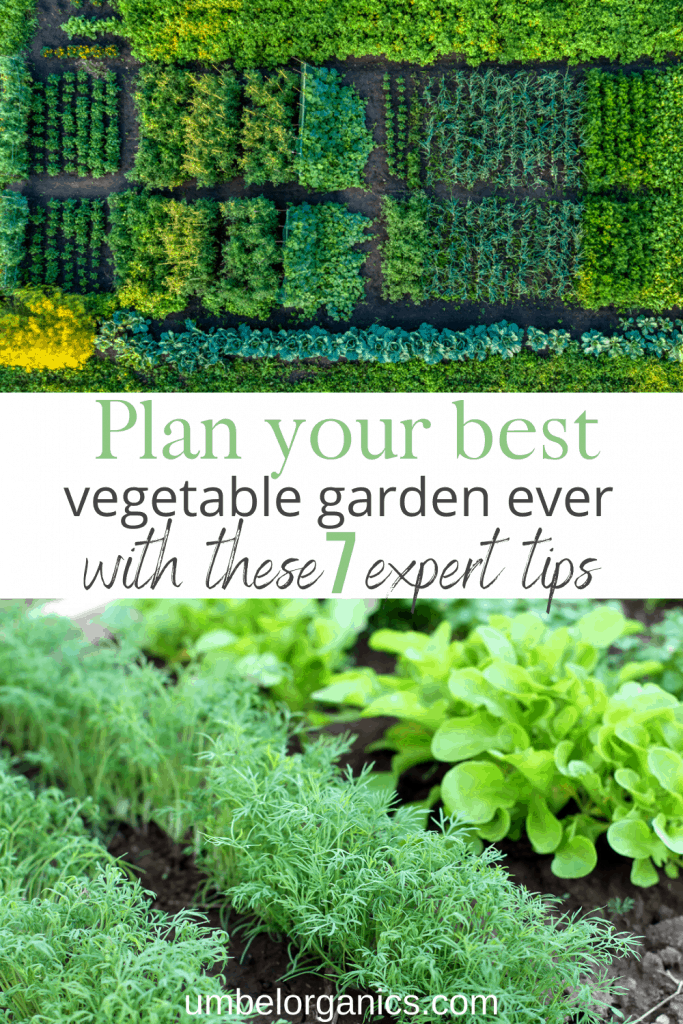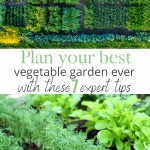How To Plan Your Garden Layout
Before you grab your shovel, we’ve got some great advice on planning your garden layout. There are a few things to consider before digging, so read on to discover the best spot in your yard for a garden.

When we moved into our house, a fall snowstorm turned the backyard into a big white rectangle. Garden plans started forming over the winter, and Jeremy was ready to dig once the ground thawed in the spring. We picked out a sunny spot close to the water spigot which seemed perfect for a garden. But after a few minutes of digging, Jeremy hit a cable. That’s when we realized we probably should have done more research before getting started. Our plan changed and the garden was moved to the other side of the yard. It’s farther from the spigot, but I can now see sunflowers and garden peas climbing the trellis from the kitchen window, and I love that. If you’re ready to start a garden but aren’t sure where to put it, we’ve got some helpful tips and suggestions to consider before getting started.
Hours Of Sunlight
Take note of how much sunlight your future garden area will get. Most garden vegetables require at least six hours of sunlight per day and more is better. Are there bushes and trees nearby that will block out afternoon sun? If they are not fully grown, will they eventually shade out your garden? Keep in mind that if you’re planning your garden in the winter, the distribution of sunlight may be very different in the summer. In our garden, large areas of the garden get very little sun in the winter, but get full sun for most of the day in the summer.
Proximity To Tree Roots
Depending on where nearby trees are located they many not cause a shade problem, but the fertilizer and supplemental irrigation we provide to our raised beds invite neighboring tree roots to invade. Once they reach your beds, tree roots are a constant menace, sucking up nutrients and moisture from your garden plants. Crops do not compete well with trees, so it’s best to avoid placing your garden beds in their vicinity.
Proximity To Water Source
Is there a water source close to your future garden spot? Your hose should be able to reach from an outdoor spigot to the farthest part of your garden. If possible, work around sprinkler heads that can be directed at the garden, saving you time on watering. This year we’re looking into installing a water spigot closer to the garden so we don’t have to drag the hose across the yard.
Check For Cable, Gas & Electric Lines
Call 811 a few days before you start digging or when you’re in the planning stages of your garden. Tell the operator where you’re planning to dig and they will contact your local utility company about your intent to dig. The utility company will send a locator to mark the approximate location of buried lines with flags or paint. Luckily Jeremy didn’t hit anything important when he started to dig, but hopefully this is warning enough to check before you dig!
Check For Sprinkler Lines & Sprinkler Heads
If your yard has a sprinkler system, make sure to avoid digging directly over sprinkler heads. If installed correctly, sprinkler lines should be buried 12 inches deep, so as long as you don’t dig that deep, you can still install a raised bed over a sprinkler line.
Garden Size
Start small. You can always expand when you’re ready. We started with 3 raised beds and now have 10 beds. It’s easy to get overwhelmed when you start, so don’t bite off more than you can chew. Take into consideration what you plan to plant and how much space you’ll need based on that. If you have very limited garden space, get creative by planting vegetables that grow up, such as pole beans that take up less ground space than bush beans.

Our backyard mapped out using the Small Blue Print digital program.
Start With A Map
Make a map of your yard as part of your garden planning. You’ll be able to get an idea of which areas of your yard make the most sense for a garden location. Start with a blank sheet of paper and map out your yard, including decks and patios, trees, shrubs, play structures, water spigots, slope and any other landscape elements. Make note of areas with full sun and partial shade. For a digital garden plan, try using a free online garden planner. Here are a few to look into:
Gardenia’s My Garden– Get a bird’s eye view of your garden with this software. It allows you to drag and drop plants and add trees and shrubs along with any other landscape elements. Once you design your garden, save it as a PDF or image file.
Marshall’s Garden Visualizer– This is a three-dimensional gardening planner. You can specify the size of your garden and customize the shape. It has an option to add a picture of your home next to the garden to give you an idea of how it will look when you build it. Your garden can be saved in your online account as you’re working.
Gardener’s Kitchen Garden Planner– Choose the area for the garden and start dragging and dropping plants, trees and bushes. Get a bird’s eye view or a three-dimensional view.
Small Blue Printer– If you want a decent free garden planner that you build and print in one go, give this program a try. Get a bird’s eye view or a two-dimensional view of your garden with this highly customizable program. Just make sure to print your plan right away, as you won’t have an option to save unless you purchase a plan.
iScape– an app for your phone designed by a landscape professional. Three-dimensional viewing and lots of design options and elements to choose from.

More Gardening Inspiration
Photo images via Adobe Stock.


This is a great article for me and my new landscape design business! Thanks for the insight and the great content!
You’re welcome!